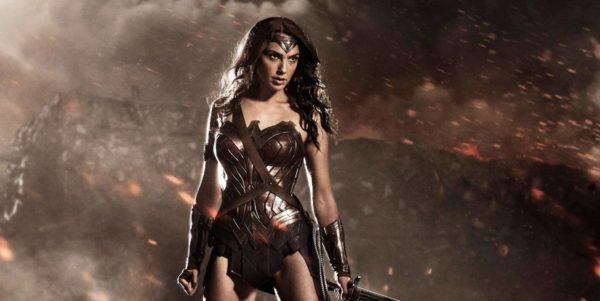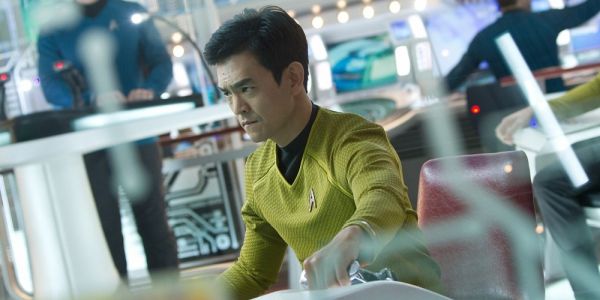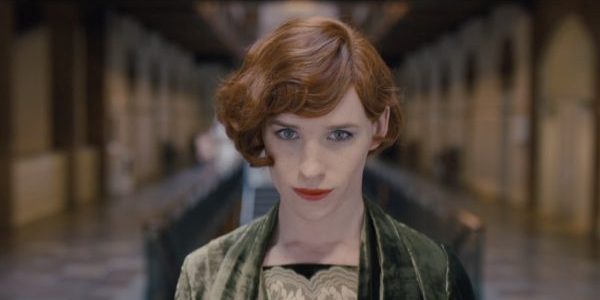Queering The Mainstream: LGBT Representation In Today’s Cinema

I'm a 20-something year old avid film fan who loves…
News of DC’s Wonder Woman writers abandoning her bisexual identity in favour of a completely heterosexual romance with Chris Pine’s Steve Trevor came as Gal Gadot confirmed in a recent interview that this aspect of Wonder Woman’s comic book identity will not be featured in next year’s blockbuster.
DC comic writer Greg Rucka confirmed earlier this year that Wonder Woman had “obviously” been in relationships with other women as she lived much of her life on an all-female island and so “it makes no logical sense otherwise” for her to have not had same-sex relationships in the past.
The decision by the film’s writers to maintain a heterosexual veneer over an originally LGBT superhero is not really a surprising one. Fears over a female-led films financially bombing should now be allayed by the likes of The Hunger Games, Bridesmaids, Alice in Wonderland, and many more, but it seems queering blockbusters may be a step too far.

There were no outright LGBT characters in the top 10 high-grossing films of 2015, the most viewers got was the gay subtext of Furious 7. In examining 700 films released between 2007 and 2014, the University of Southern California found only 0.4% of leading characters were LGB and no characters were transgender.
With so many films wiping LGBT people off the map, from blockbusters to indies, what do the few queer characters we have now say about LGBT representation? What are the factors stopping the queering of the mainstream? And how does the lack of queer casting and directing also impact the film industry?
Where Are We Now?
2016 has been a standout year for disappointing LGBT representation: fleeting displays of affection, clandestine sexualities leaving it to the imagination of fans, and the “straightening” out of queer characters are just some of the issues. Three of this year’s biggest movies, Independence Day: Resurgence, Ghostbusters, and Star Trek Beyond featured queerish characters that completely missed the mark.
Roland Emmerich’s gay scientists dipped their rainbow toes in water before fully submerging their relationship before the audience. But this submergence only culminated in hand holding hand and a story about a jumper before one of their deaths.
Writer Simon Pegg and former Sulu actor George Takei butted heads over whether Enterprise Captain Sulu was ‘gay enough’ or if a new queer character should have been created in this year’s Star Trek. With our best film writers and veteran gay actors not agreeing on how LGBT people are best portrayed, are we simply doomed to two-dimensional representation forever?

This year’s Ghostbusters reboot saw lesbian actress Kate McKinnon do her weird thing on the big screen, but after questions over her character’s undisclosed sexuality, director Paul Feig offered little in the way of answers and instead highlighted studio intervention in his lacking response.
These films and their poor LGBT representation have been widely talked about but they’re significant in really representing where the film industry is now: unable to accurately represent the lives of millions of people.
Queer Casting
These examples highlight how queer people still can’t fit into today’s blockbusters and are instead awkwardly wedged in to play the diversity card. Awards season more easily brings LGBT lives to the silver screen; The Kids Are Alright, Milk, Brokeback Mountain, Dallas Buyers Club, and of course last year’s The Danish Girl and Carol stand out. These critically successful films could be judged for taking advantage of LGBT lives for the sake of Oscar glory but they fundamentally offer honest, gritty and original queer representation.
But here it’s not a question of representation, but rather a question of casting. This argument can quickly descend into “well, the best actor deserves the role”, “just because an actor is queer doesn’t mean they automatically have the right to queer roles”.

While perfectly correct, LGBT actors are fundamentally missing out on roles because they’re not big names and don’t have the same opportunities. Every leading actor in the list of LGBT films above, in the public eye, are cisgender and heterosexual. The likes of Cate Blanchett, Sean Penn and Eddie Redmayne play these characters and then forget them when awards buzz is over and trophies fill their shelves.
The T in LGBT
Within the LGBT, the trans community especially lack any sort of representation in front or behind the camera. Matrix directors, the Wachowskis, are the standout names here but two people representing an entire minority? That’s not good enough.
Hollywood can learn from the creator of transgender drama Transparent, Jill Soloway, who encouraged trans voices to share their story on the show. Now the show has its first trans director, Silas Howard. This is a big statement to make and one that Hollywood needs to listen to.
In their study of LGBT characters, the University of Southern California also found that no trans characters appeared in the 700 films they watched. In GLAAD’s 2015 study of LGBT representation in films by Hollywood’s seven largest studios, only one film (Hot Pursuit) out of 126 featured a transgender character.
The overarching issue of the lack of LGBT representation in front of and behind the camera is particularly heightened when looking at the transgender community. Trans characters are overlooked and trans actors and directors aren’t given the same opportunities to share their voices.
How can things change?
Studios must let go of the idea that casting or creating an LGBT character will lose them money. Writers need to represent queer characters in everyday life not just in cliché struggles associated with the LGBT community. Queer actors must be given more opportunity to play the LGBT roles they deserve.
These solutions aren’t easy; there are cultural obstacles in place that have always hindered progress. Half of the film year is dogged by a lack of diversity behind the camera, and the other half refuse to represent LGBT lives at all. The film industry must evolve just like the society it represents.
How can LGBT people be better represented behind and in front of the camera? Comment below!
Does content like this matter to you?
Become a Member and support film journalism. Unlock access to all of Film Inquiry`s great articles. Join a community of like-minded readers who are passionate about cinema - get access to our private members Network, give back to independent filmmakers, and more.
I'm a 20-something year old avid film fan who loves to write about all things film. I'm from the UK. A random list of my favourite film stuffs include: David Fincher, Inglorious Bast**ds, Juno, The Social Network, Jurassic Park, Pride, Leonardo DiCaprio, Eternal Sunshine of the Spotless Mind and Julianne Moore.













